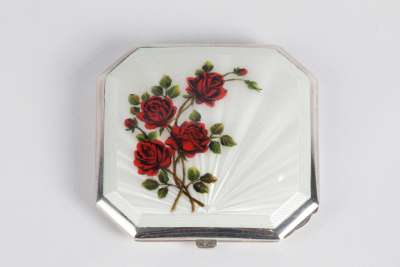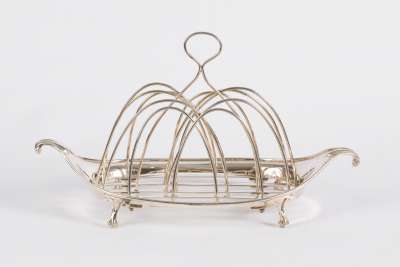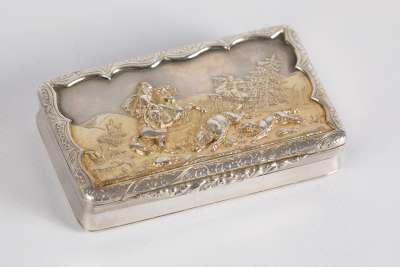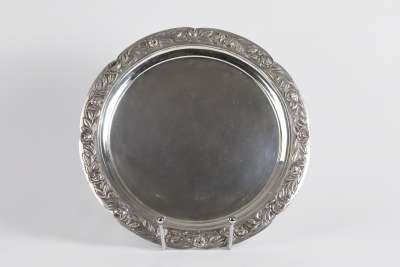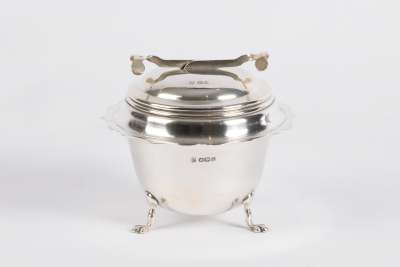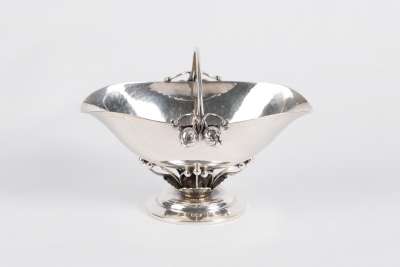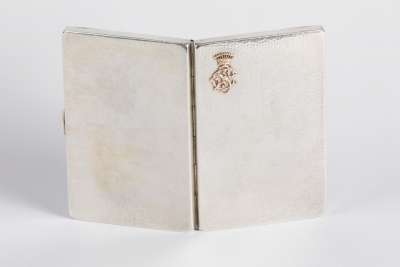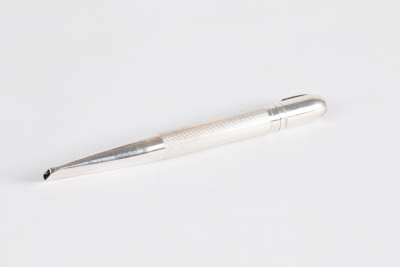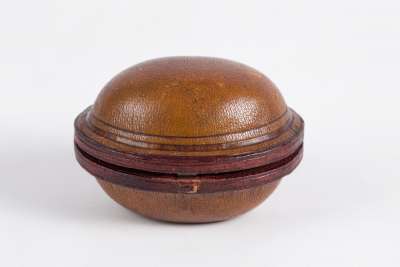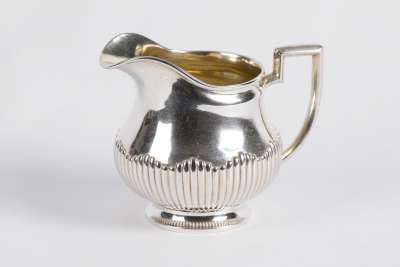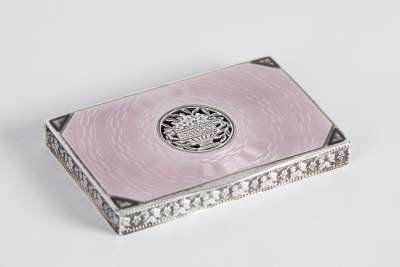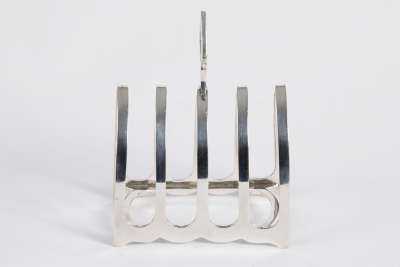This Victorian sterling silver tripod posy holder, crafted by William Neal in London in 1867, exemplifies the exquisite craftsmanship of 19th-century silverwork. The piece showcases intricate floral engravings and filigree patterns, characteristic of the Victorian era's decorative style. Designed with an urn-shaped top, it is equipped with a pin mechanism to securely hold a small bouquet. The posy holder stands on three hinged tripod legs, connected by delicate chains, which can be collapsed for convenient storage and transport. The piece is marked with William Neal's maker's mark, confirming its origin and authenticity. Circa: 1867
Condition Report
This posy holder is in excellent condition considering its age. The hinged tripod legs function smoothly, and the fine chains remain intact. The floral motifs and filigree design retain their sharpness, showing minimal signs of wear. A light patina contributes to an aged look, without diminishing the silver's lustre. The hallmarks are clearly legible, attesting to the piece's authenticity and origin. This posy holder has been well-preserved, making it a valuable addition to any collection.
Dimensions
Weight: 60gm, Length: 13.5cm, Width: 4.5cm, Height: 13.5cm.
Original Use: Aesthetic and Practical
During the Victorian era, posy holders, also known as tussie-mussie holders, served both aesthetic and practical purposes. They were popular accessories for carrying small floral arrangements, often used to mask unpleasant odours in public spaces. This particular holder exemplifies the Victorian ideal of combining beauty with utility, reflecting the social customs and aesthetic sensibilities of the time.
Victorian Style: Ornate and Functional
The design of this posy holder embodies the Victorian fascination with ornate decoration and functional objects. Detailed floral motifs and scrollwork are typical of the period, showcasing the high level of artistry in silver items from the era. The inclusion of beaded edges further enhances its decorative appeal, while maintaining the functionality that was highly valued during the Victorian age. This piece is a fine representation of the artistic and practical inclinations of the 19th century.
Craftsmanship of Sterling Silver
The creation of this posy holder involved the skilled art of silver crafting, particularly the manipulation of sterling silver, known for its durability and lustrous finish. The intricate engravings and filigree patterns were meticulously hand-crafted, requiring precision and expertise. The maker employed traditional techniques to achieve the detailed floral motifs, ensuring each element contributed to the overall design. The collapsible tripod legs and chain connections were carefully engineered to offer stability and ease of use.
Crafted by the Renowned Silversmith, William Neal
William Neal was a prominent silversmith in London during the mid-19th century. His work is noted for its attention to detail and elaborate ornamentation, often featuring intricate floral and scroll motifs that were popular during the Victorian era. Neal's maker's mark, registered at the London Assay Office, is present on this piece, confirming its authenticity. This posy holder is a testament to Neal's skill and the high standards of craftsmanship that defined his creations, making it a valuable piece for collectors and enthusiasts.
Collected by Fans of Victorian Silverwork
Posy holders were essential accessories for Victorian women and are now considered collectible antiques, valued for their historical significance and craftsmanship. Collectors are attracted to these pieces for their beauty, functionality, and the insight they provide into the social customs of the era. This posy holder is a tangible piece of history, offering a glimpse into the daily lives and aesthetic preferences of the Victorian period. Its intricate design and well-preserved condition make it a sought-after item among enthusiasts and collectors of Victorian silverwork.




